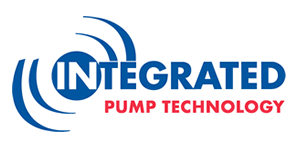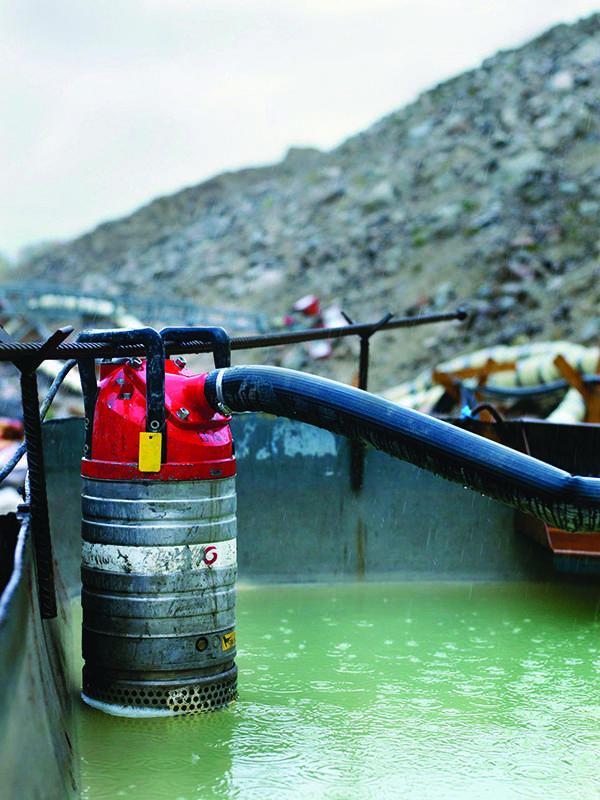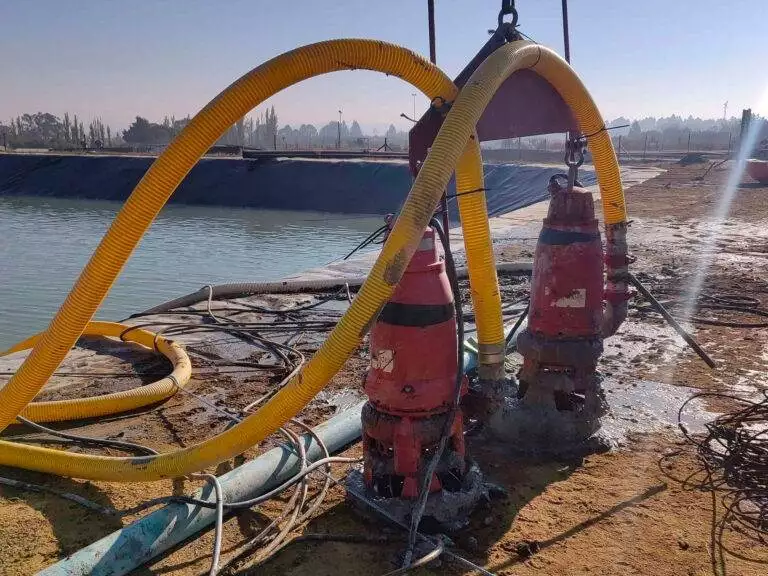Dewatering a mine, quarry or construction site is often a mission-critical activity. This makes high performance and reliability of submersible pumps a vital asset to many operations.
Submersible pumps are generally chosen over end-drive centrifugal pumps when the suction lift is greater than about 7 m, depending on atmospheric pressure. What characterises submersible pumps is that they are encapsulated and can be fully submerged in water. They can be used underground to pump between sumps as well as to a collection pit, where a larger pump can transfer water to another level or to surface.
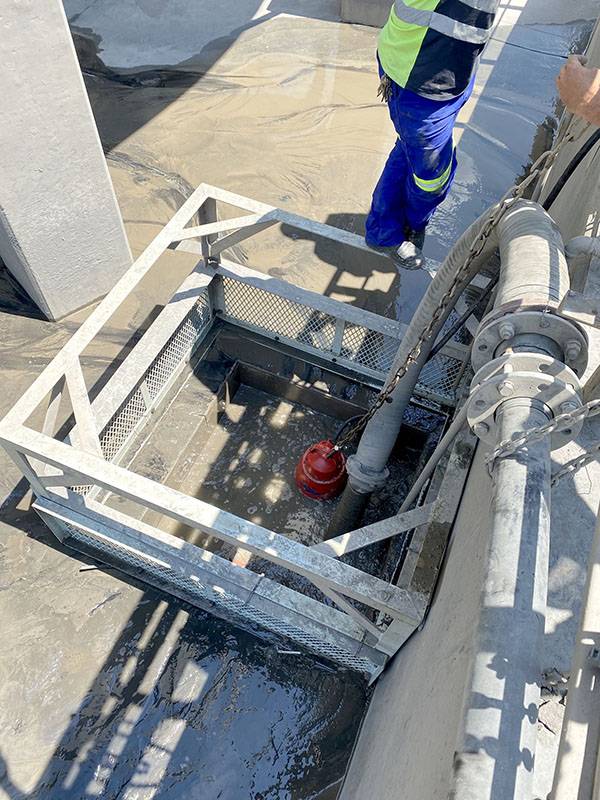
Why submersibles?
Their ease of mobility makes submersibles a popular choice for dewatering as well as pumping sludge and slurry. Once a pump has emptied a sump, for example, it can be quickly relocated to service another requirement elsewhere – raising its overall equipment effectiveness and value to the business.
Submersible pumps are electrically powered – such as the Grindex range, for which Integrated Pump Technology is the official distributor for the SADC region of Africa. This allows ease of installation, a smaller footprint and low maintenance requirements. Grindex pumps are particularly well known for their ‘plug-and-pump’ reliability. Users appreciate being able to take a ‘set and forget’ approach to these pumps.
An important factor behind the popularity of submersibles is their continual technological improvement – constantly raising their efficiency and reliability. Where required, efficiency innovations can include the inclusion of variable frequency drives (VFDs), which automatically regulate the speed of the pump. Non-clog impellers have become standard in these pumps, further boosting their reliability and up-time.
The Grindex range offers additional features such as an air valve, to allow air cooling during extended periods of dry running. Another Grindex innovation is its SMART electronic surveillance system, which controls phase rotation, phase loss and overheating. This SMART unit trips the pump when necessary to prevent wear or damage, minimising maintenance and repair costs.
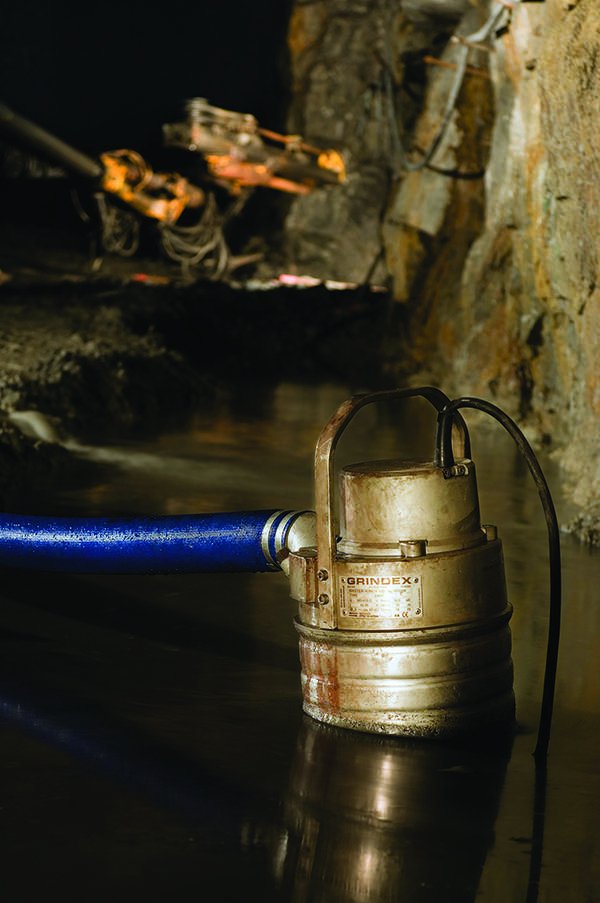
Making the right selection
Submersibles perform well in rough working conditions and can be put to work in diverse applications. A key benefit is their ability to handle water which contains suspended solids – as well as highly viscous and abrasive slurry. These applications actually define the three main types of submersibles: dewatering, sludge and slurry pumps. Selecting the right type of submersible is a good starting point for choosing the best pump for the job, after which a number of other factors should be considered.
Dewatering pumps are designed to manage smaller abrasive particles like sand, smaller stones and clay – with sizes up to about 15 mm. Depending on the size and nature of the solids, an open or closed impeller design can be used. A closed impeller is used in highly demanding applications where material passes completely through the impeller. Open impellers have two parts that must be well-maintained, to avoid wear between them that will decrease performance.
Sludge pumps are used for pumping water with higher densities of larger solids – up to about 80 mm in size. Many of these pumps are designed with a Vortex impeller to reduce wear, although they also use closed and open impellers. Most of the pumped water in fact does not pass through the impeller, so wear and clogging are minimised.
Slurry pumps are designed to withstand demanding applications involving heavy abrasion, such as the pumping of fly ash. They are also used in dredging applications. To cope with the abrasiveness of the material to be transported, the hydraulic parts of the pump are often made of Hard-iron™ – as is the case with pumps in the Grindex Bravo range. These pumps can also include agitators to help re-suspend particles around the pump inlet. In fact, from the Bravo 400 model upwards, agitators are included as standard features.
Materials of construction
The abrasiveness of the slurry or the suspended solids will affect the choice of construction materials used for the pump’s wear parts. Most mining and construction applications will demand that the pump is made of durable materials such as cast iron or hard-iron™.
In many applications, the chemical content of the water, sludge or slurry can also be corrosive. This requires that the pump or certain of its components be made of corrosion-resistant material. Grindex dewatering and sludge pumps can be supplied in stainless steel , while it can supply pumps with a blue gel coating on the wear parts. Zinc anodes are another option to resist corrosion, and these can be applied across the range.
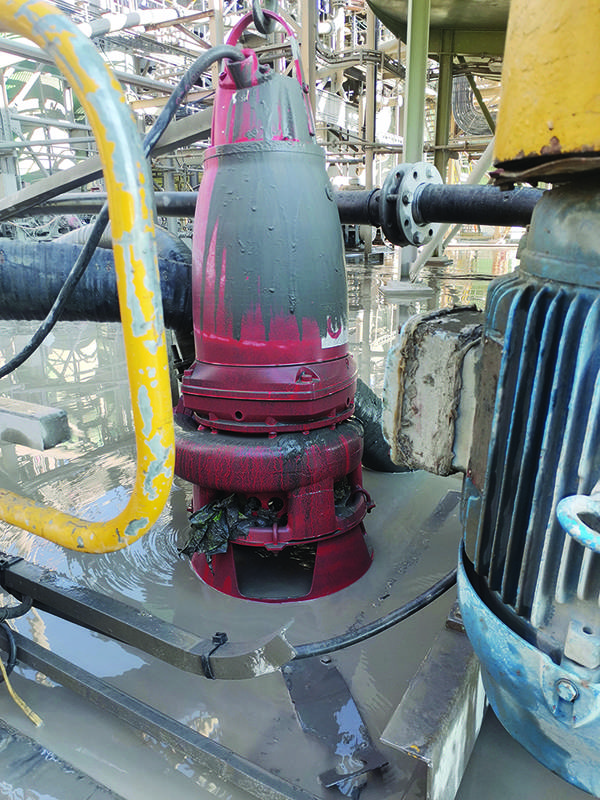
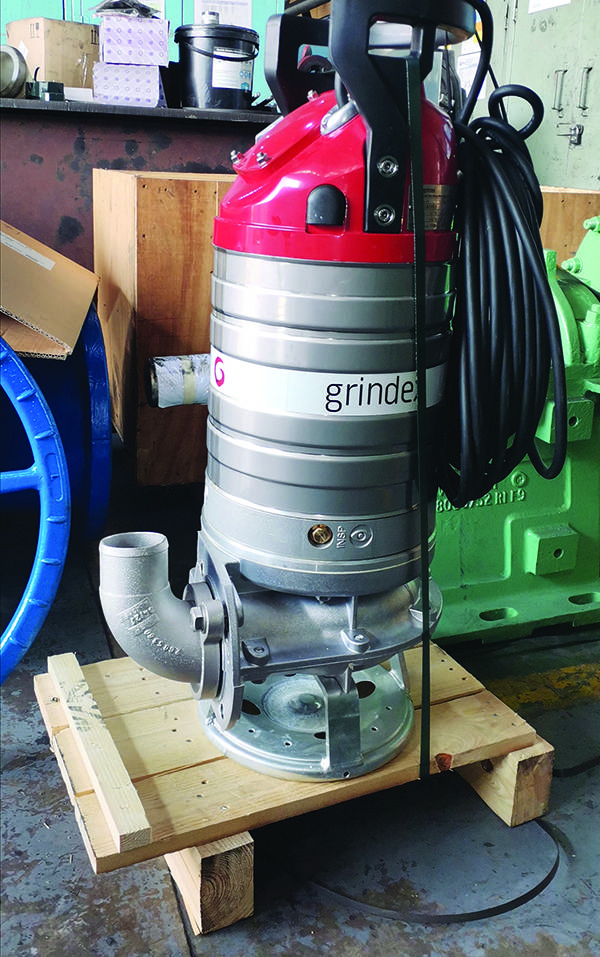
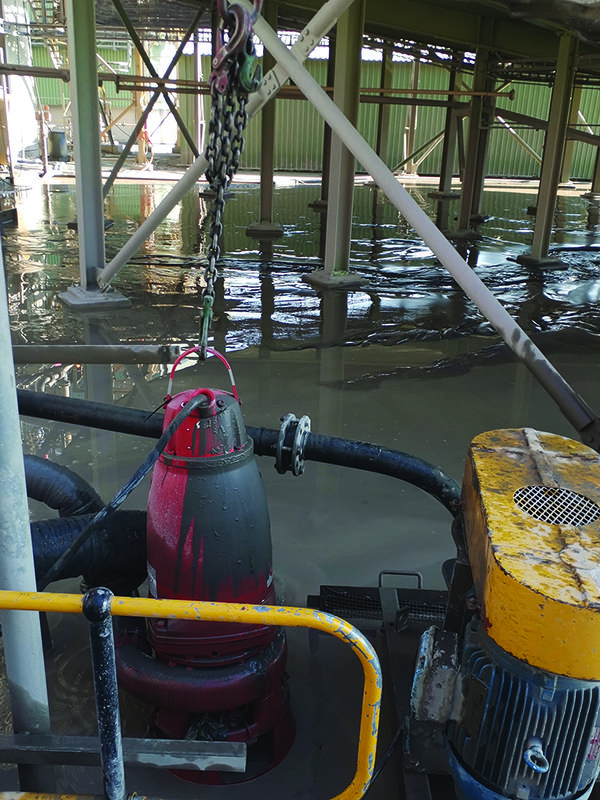
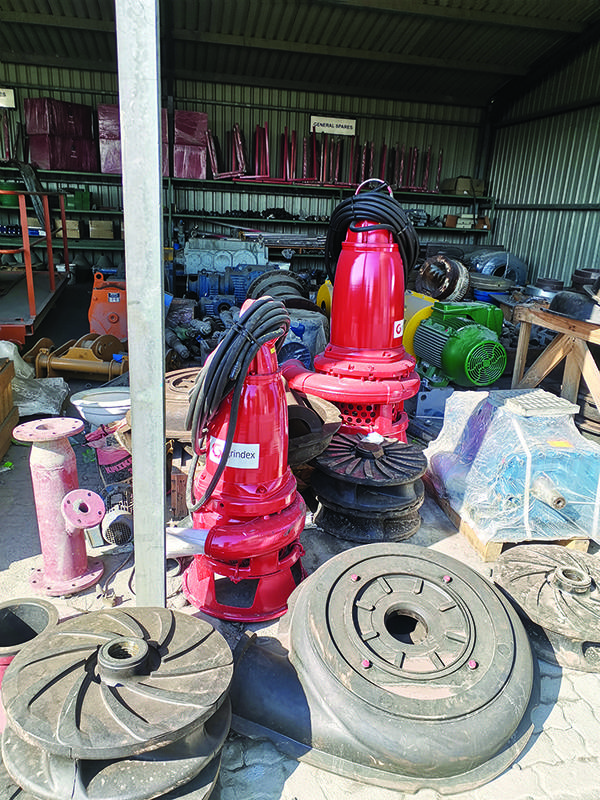
Getting the size right
It is essential to size the pump according to the application, to achieve optimal efficiency. This means knowing how much water will need to be moved, and the rate of transfer. With an undersized pump, there is a risk of the mine or job-site overflowing. An oversized pump risks pumping the hole dry, although the air valve in the Grindex dewatering and sludge pumps reduces the risk arising from pumps running dry.
Correct sizing will ensure optimal performance, so the pump protects the site reliably and cost-effectively. Using a close-coupled setup, Grindex pumps further enhance performance as there is less energy loss. This allows a smaller pump with a lower kW rating to be specified for a particular duty. This, in turn, means lower operating costs over the full life cycle of the pump.
Proper positioning
The positioning of the equipment is essential, making sure that the pump installation and sump preparation is appropriate for the application. This includes considering how the pump is suspended, supported or surrounded. Where a pit floor is highly sedimented, for instance, it is possible for a pump to ‘burrow down’ into the sediment, even deep enough to be irretrievable. This may require the pump to be suspended from a pump flotation device.
The pump should be submerged to avoid overheating, which will damage the pump’s motor. For continuous operation, dewatering pumps can operate in low flow applications. Here, the pumped fluid passes through the pump and across the motor to dissipate heat. Sludge or slurry pumps, however, require the pump motor be three-quarters submerged or completely submerged to cool the motor. Alternatively, the pump will require a ‘cooling jacket,’ in which a fluid is circulated around the motor to dissipate heat. To enhance reliability and cost of maintenance, Grindex includes a cooling jacket in its Bravo range of pumps.
Good positioning should also ensure that there are no sharp bends in the discharge hose and piping. These could impede flow and undermine pump performance. In typical installations, the pump should be submerged less than 20 m deep. It is also worth reiterating that all equipment needs to be cared for, so a systematic preventive maintenance programme should be in place for the pump, piping system, valves, drains and vents in the pipeline.
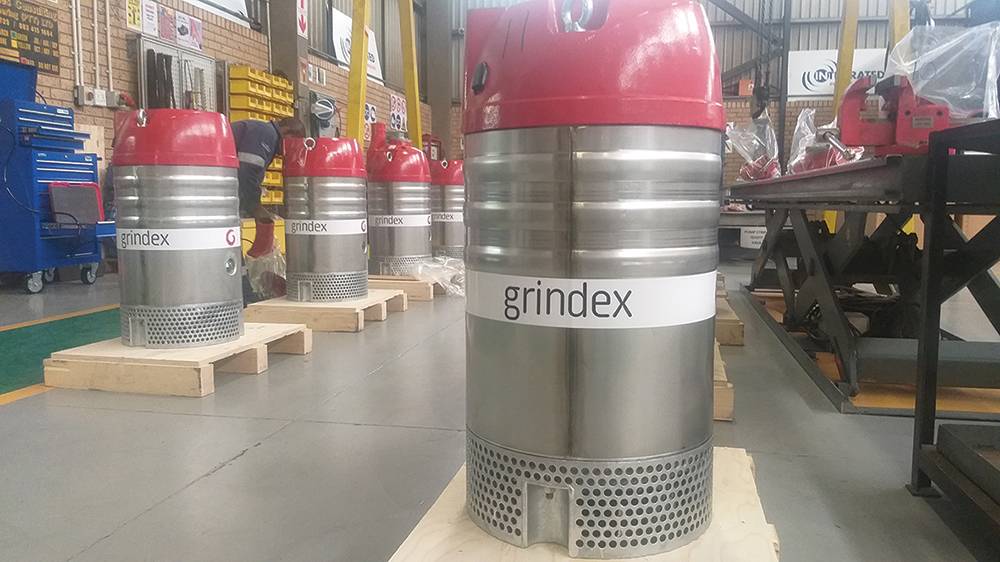
Working from a checklist
To sum up and apply the points above, a checklist is useful to help select the right submersible pump. First consider the pumping information. What is the flow requirement – measured in litres per second or cubic metres per hour? What is the static head – or the vertical elevation change – in metres? It is critical that the pump’s kilowatt rating and impeller type are suited to the flow rate and the total dynamic head on the pipeline discharge point. Also consider the sump dimensions. What is the depth and the size of the opening? What is the size, percentage and specific gravity of the solids in the liquid to be pumped? What is the temperature of the liquid?
Secondly, outline the discharge information. What is the ‘run length’ to the discharge point? What is the length, diameter and material of the discharge hose? Friction losses in the hose, along with the static head, are the key factors in determining the total dynamic head.
Thirdly, establish the type and quality of power available on site. Check the voltage and phase, as these can vary from the normal 230 volts single phase to 400 or 500 volts three phase supply. Remember that power supply can be unreliable in remote locations, and poor quality power can cause pumps to fail.
Fourthly, estimate the level of suspended solids that can be expected in the liquid being pumped. Also determine the type, concentration and acidity of these solids, as these will affect the choice of design and construction material of the pump.
Fifthly, consider the conditions on site. Are there any site restrictions for the installation? Is it easy to gain access to the site? Can a vehicle reach the location where the pump is to be installed?
Finally, to make sure that the submersible pump selection is optimal, it is useful to draw on the professional insights of pump manufacturers and dealers. A pump expert can help to assess the demands of each application. Integrated Pump Technology has skilled and experienced distributors around southern Africa to advise customers on correct pump selection for a specific application. The company collaborates closely with these carefully selected distributors to ensure they are trained and supported in Grindex technology.
